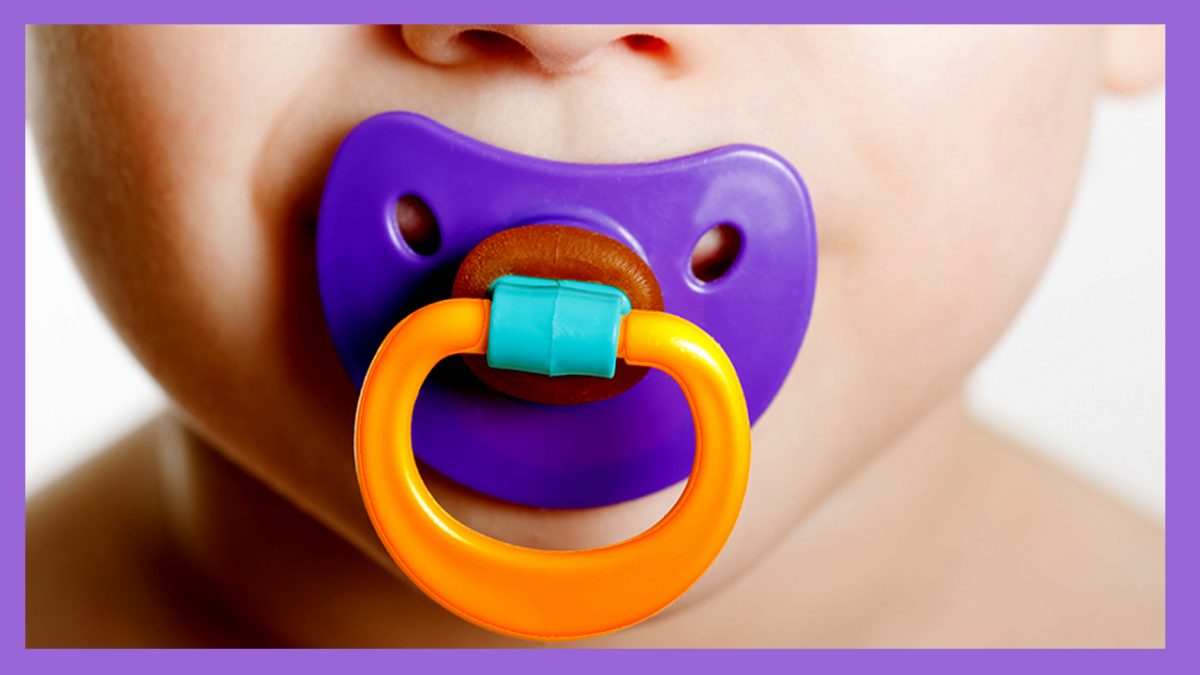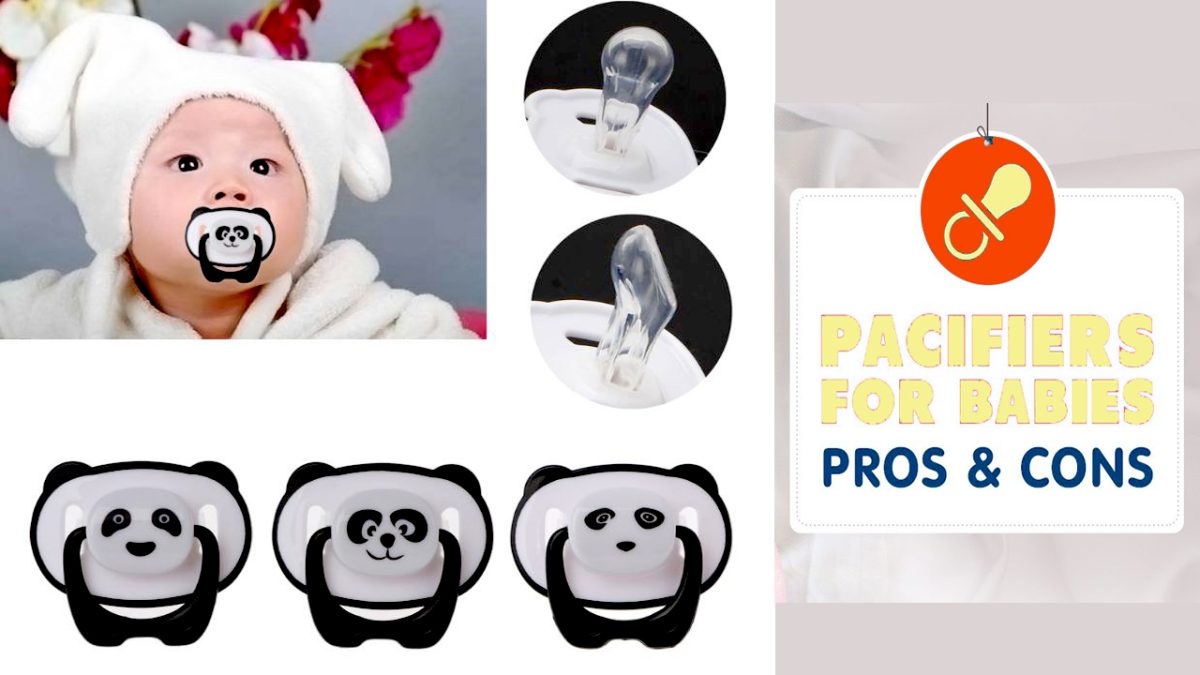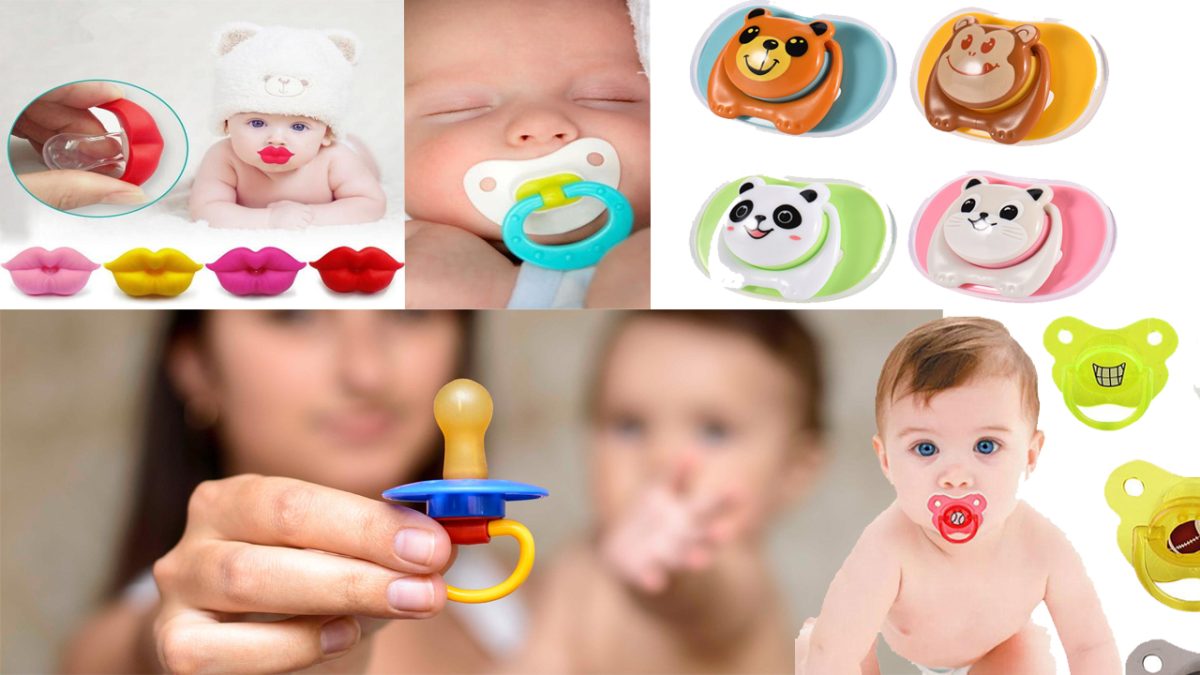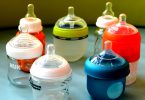Table of Content
Best Baby Pacifier
A baby pacifier, also known as a dummy, binky, or soother, is a small, nipple-shaped object designed for babies to suck on. Pacifiers are typically made of rubber, silicone, or plastic, and are designed to mimic the shape and feel of a mother’s breast.
Pacifiers can be used to soothe babies, help them fall asleep, and provide a sense of comfort and security. They are commonly used in the first year of a baby’s life, although some babies may continue to use them for longer. While pacifiers can provide benefits for babies, it is important to use them safely and to wean babies off them at an appropriate age.
It is generally recommended that parents wean their children off pacifiers by the age of 2 or 3 to prevent any negative effects on their teeth and speech development. However, pacifiers themselves are not inherently harmful to teeth as long as they are used appropriately and parents follow some basic guidelines.
For example, parents should choose orthodontic pacifiers that are designed to mimic the shape of the breast and do not put pressure on the developing teeth. They should also clean pacifiers regularly and replace them as they become worn or damaged.
Teething Pacifier
Teething pacifiers, such as those filled with frozen fruit or water, can be a helpful tool for soothing teething discomfort. However, parents should always supervise their children when using these pacifiers to prevent choking hazards.

Teething Pacifier
Products like the Ryan & Rose Cutie Pat Pacifier Teether can provide both pacifier and teething functions. However, parents should still monitor their child’s use of these products and follow the manufacturer’s instructions.
As for novelty pacifiers such as the Billy Bob Teeth Pacifier or Hillbilly Teeth Pacifier, they may be amusing but they are not recommended for regular use. These pacifiers may interfere with normal mouth and teeth development and could potentially cause harm.
Types Of Pacifiers
- Nuby Teething Pacifier: Nuby makes a variety of teething pacifiers, which can be filled with water and frozen to provide cooling relief for sore gums. The pacifiers come in different shapes and sizes to accommodate different ages and stages of teething.
- Freeze Pacifier Teething: Freezing a pacifier can provide temporary relief for teething pain. It is important to only use pacifiers designed for freezing and to supervise your child when using them to prevent choking hazards.
- Teething Pacifier Clip: A teething pacifier clip is a clip that attaches to a baby’s clothing and holds a pacifier, making it easy to keep the pacifier within reach and prevent it from getting lost.
- Do pacifiers help with teething? Pacifiers can provide temporary relief for teething pain, especially if they are designed for teething and can be filled with water and frozen. However, it is important to limit pacifier use and address the underlying cause of the teething pain.
- Pacifier for teething: A pacifier designed for teething can be filled with water and frozen to provide cooling relief for sore gums. These pacifiers come in different shapes and sizes to accommodate different ages and stages of teething.
- Pacifier teether: A pacifier teether is a pacifier designed for teething, with textured surfaces or bumps to provide soothing relief for sore gums.
- Raspberry Teething Pacifier: Raspberry teething pacifiers are pacifiers that can be filled with water and frozen, and have a textured surface for teething relief. They are shaped like raspberries and are designed to be easy for babies to hold.
- Teeth Pacifier/Big Teeth Pacifier/Buck Teeth from Pacifier: While there are pacifiers with teeth or buck teeth designs available, it is important to note that prolonged use of pacifiers can potentially cause dental problems such as malocclusion or misalignment of the teeth. It is important to follow safe pacifier use guidelines and to wean your child off the pacifier at an appropriate age.Manhattan’s Teether:

FAQ’s Baby Pacifier
FAQ’s Baby Pacifier
- Are pacifiers safe for babies? Yes, pacifiers can be safe for babies when used properly and appropriately. They can help soothe a fussy baby and reduce the risk of Sudden Infant Death Syndrome (SIDS) when used during sleep.
- When should I introduce a pacifier to my baby? The American Academy of Pediatrics recommends waiting until breastfeeding is established before introducing a pacifier, usually around 3-4 weeks old. However, every baby is different, and some may benefit from a pacifier sooner.
- How often should I clean my baby’s pacifier? It is recommended to clean pacifiers after each use. This can be done by washing them with warm water and mild soap, or by sterilizing them in boiling water or a sterilizer.
- Can pacifiers cause dental problems? Extended use of pacifiers can cause dental problems, such as crooked teeth or bite issues if used past the age of 2-3 years old. It is important to wean your child off the pacifier at an appropriate age and to choose pacifiers designed to minimize dental issues.
- Can pacifiers interfere with breastfeeding? Introducing a pacifier too early may interfere with breastfeeding, as it can cause nipple confusion for some babies. However, waiting until breastfeeding is well-established before introducing a pacifier can help prevent this issue.
- Can pacifiers be used during sleep? Yes, pacifiers can be used during sleep to help reduce the risk of SIDS. However, parents should follow safe sleep guidelines, such as placing the baby on their back to sleep and avoiding loose blankets or other items in the crib.
- Are teething pacifiers safe? Teething pacifiers, such as those filled with frozen fruit or water, can be safe when used under close supervision to prevent choking hazards. However, parents should always monitor their children when using these pacifiers.
- How do I choose the right pacifier for my baby? When choosing a pacifier for your baby, look for one that is the appropriate size and shape for their age and mouth. Also, consider materials (such as silicone or latex) and features (such as orthodontic designs) that may be beneficial for your baby.
- Can pacifiers help with colic? Pacifiers can help soothe a fussy babies, including those with colic. However, it is important to address the underlying cause of colic and to use pacifiers in moderation.
- How do I wean my baby off a pacifier? To wean your baby off a pacifier, start by gradually reducing their use and offering alternative soothing methods, such as a favorite blanket or toy. You can also try limiting pacifier use to certain times of day or activities, such as nap time or car rides.
- Can pacifiers cause ear infections? Extended use of pacifiers, especially during sleep, can increase the risk of ear infections in some babies. It is important to follow safe sleep practices, such as not allowing the baby to fall asleep with the pacifier in their mouth.
- Can pacifiers be sterilized in the microwave? Yes, many baby pacifiers can be sterilized in the microwave using a special sterilization kit. Be sure to follow the manufacturer’s instructions and use caution when handling hot items.
- Can pacifiers be reused for multiple children? It is generally recommended to use a new baby pacifier for each child to prevent the spread of germs and reduce the risk of infection.
- How can I tell if my baby is ready to stop using a baby pacifier? Signs that your baby may be ready to stop using a pacifier include being able to soothe themselves without it, showing less interest in the pacifier, and being able to communicate their needs and wants more effectively.
- Can pacifiers interfere with speech development? Extended use of pacifiers can potentially interfere with speech development, especially if the child uses the pacifier past the age of 2-3 years old. It is important to wean your child off the pacifier at an appropriate age to minimize the risk.
- Are all pacifiers the same size and shape? No, baby pacifiers come in different sizes and shapes to accommodate different ages and mouth sizes. It is important to choose a pacifier that is appropriate for your baby’s age and mouth size.
- Can pacifiers help with teething pain? Teething pacifiers, such as those filled with frozen fruit or water, can help soothe teething pain. However, parents should always supervise their children when using these pacifiers to prevent choking hazards.
- How many baby pacifiers should I buy? It is a good idea to have a few pacifiers on hand in case one gets lost or dirty. However, it is also important to limit pacifier use and avoid over-reliance on them for soothing your baby. At What Age Can You Start To Teeth Whitening Treatments?
- Are there any disadvantages to using a pacifier? Some disadvantages of pacifier use can include dental problems, speech issues, and potential reliance on the baby pacifier for soothing. It is important to weigh the benefits and risks when deciding whether or not to use a pacifier with your baby.
- Can pacifiers be used during airplane travel? Yes, pacifiers can be used during airplane travel to help soothe your baby’s ears during changes in cabin pressure. However, be sure to follow airline regulations and guidelines for safe pacifier use during travel.
- Are there any pacifiers designed for premature babies? Yes, there are pacifiers specifically designed for premature babies, including those with smaller sizes and softer materials to accommodate their delicate mouths.
- Can pacifiers cause nipple confusion for breastfed babies? Extended pacifier use in the first few weeks of life can potentially cause nipple confusion for breastfed babies. It is recommended to wait until breastfeeding is well established before introducing a pacifier.
- How often should pacifiers be cleaned? Baby Pacifiers should be cleaned regularly to prevent the buildup of germs and bacteria. It is recommended to clean pacifiers before each use and to replace them every few months.
- Can pacifiers help with SIDS prevention? Using a pacifier during sleep has been shown to potentially reduce the risk of SIDS (Sudden Infant Death Syndrome). However, it is important to follow safe sleep practices, such as placing your baby on their back to sleep and avoiding loose bedding.
- Can pacifiers cause tooth decay? Extended use of pacifiers can potentially cause tooth decay and other dental problems. It is important to limit pacifier use and to clean the pacifier regularly to prevent the buildup of bacteria.
- How can I sterilize my baby’s pacifier? Baby Pacifiers can be sterilized using a sterilizing solution, boiling water, or a sterilizing machine. Be sure to follow the manufacturer’s instructions and use caution when handling hot items.
- Can pacifiers help with reflux? Baby Pacifiers can help soothe a fussy baby with reflux, but it is important to address the underlying cause of the reflux and to use pacifiers in moderation.
- How do I introduce a pacifier to my baby? Introduce the pacifier to your baby during a calm and relaxed moment, such as after feeding or during a nap. Offer the pacifier to your baby and let them take the lead in accepting it. It may take some time for your baby to get used to the pacifier, so be patient and keep trying.
- How can I wean my child off the Baby pacifier? Weaning your child off the pacifier can be a gradual process. You can start by limiting pacifier use to certain times of day or situations, such as nap time or bedtime. You can also try gradually reducing the amount of time your child uses the pacifier each day. It is important to be patient and consistent, and to offer other forms of comfort and soothing to your child during the weaning process.
- Can pacifiers cause ear infections? Baby Pacifier use has been associated with a slightly increased risk of ear infections in babies and young children. However, the risk is small and can be minimized by limiting pacifier use and following safe sleep practices, such as placing your baby on their back to sleep and avoiding loose bedding. If your child is prone to ear infections, you may want to consult with your pediatrician about whether or not to use a pacifier.





